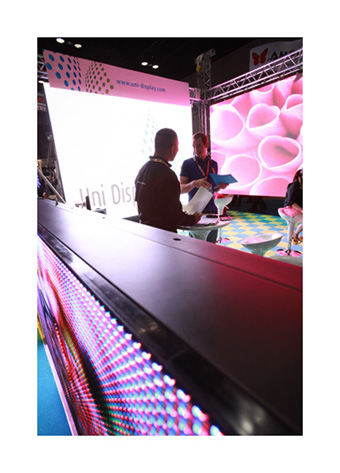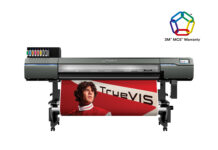The dynamic digital sign (DDS) market promises to generate profits for those sign shops interested in exploring this field. However soaking in all the technologies and opportunities here can possibly prove quite dizzying for those of you looking to get started (or even for those of you with experience). The hardware, software, and markets seem to be transforming at a high refresh rate.
But will DDS change the face of signage as we know it?
Although there’s been some significant traction and evolution regarding DDS within the signage industry, current communication between the two industries can be considered “unstructured”—which can hamper those of you interested in dipping their toes into the DDS pool.
Sign Builder Illustrated recently spoke with Glenn Feder, director of business development at the International Sign Association, who has been working extensively with the digital sign market for nine months now. His association’s increased activity related to DDS-related information (Dynamic Digital Park and co-locating with Almo EV 4 at this past year’s Sign Expo, dynamic digital signage seminars, upcoming certifications, etc.) can be attributed to their earlier business-wise education of members on alerting them to previous possible footholds (wide format, EMCs, fabric printing, etc.). “Dynamic digital signage just happens to be a little bit more complex than others,” he says.
Feder breaks down DDS acceptance into three groups: those fully embracing this technology, those that believe it’s a passing fad, and, well, everyone in-between.
The ones who have embraced DDS opportunities, observes Feder, appear to be forward-looking entrepreneurial types less afraid of change. “The larger national sign companies have more resources to put into this direction and are doing so,” he says. “It’s a bit more of a lift for smaller shops to do this, because of the percentage of resources they need to staff up to or invest in.
 “Also some sign makers say they’re not going to venture down that road until they see more stability within the [DDS] supplier base. That way, if they do deploy with one of their key customers, they won’t end up with egg on their face later on.”
“Also some sign makers say they’re not going to venture down that road until they see more stability within the [DDS] supplier base. That way, if they do deploy with one of their key customers, they won’t end up with egg on their face later on.”
Feder also points out that there are shops worried that DDS technology will cannibalize their current business. While he does says that there will be “some cannibalization,” it’s important to look at the entire body of opportunity here and start to take notice of where digital marketing is headed. “It’s just a matter of time before it bleeds over and everyone goes more and more digital,” he says. “So if it does cannibalize some of the more traditional, established pieces, it might help to be the sign maker ready to be able to offer digital to their clients.”
However Feder reassures you that traditional signage (prints, vinyl, letters, etc.) isn’t going nowhere. “There’s always going to be a need for it,” he says, “but for those willing and able to move and evolve into the DDS side of things, it probably makes good business sense to do so.”
One of the big selling points made to sign shops when it comes DDS entry is “content provision.” This shouldn’t be surprising, as most suppliers regard this as a natural evolution. After all, most sign makers deal with content every day (no matter the sign type). “The margins are much healthier in content and on anything that’s reoccurring—content, maintenance, maybe even installation,” says Feder. “And once you move into other areas where you can refresh the content and maintain the solution, there’s more upside.
“Don’t just look at it as the display and the hardware, because those alone are a thinner margin of profit.”
When starting out and trying to figure out how to market DDS, Feder recommends looking at where your niche is now. “If 50 percent of your business is menu boards, that’s where I’d begin targeting,” he says. “If most of your business is hospitals, I’d first test DDS out in those environments (i.e., the ones that you’re already strongest in and could easily move forward).”
Feder also cautions not to start your customers full-speed ahead on DDS right away. “I would encourage sign companies to get some basic training and information first,” he says.
However the single most important question a sign shop needs to ask their customers to ensure success with DDS is: What are your objectives with this deployment? “I think a lot of people move too quickly—both end-user and sign companies/deployers—to product solutions without asking what they’re trying to accomplish,” says Feder. “Without asking this question, you don’t know what the target is, nor do you have any way of measuring success.”
—Jeff Wooten











